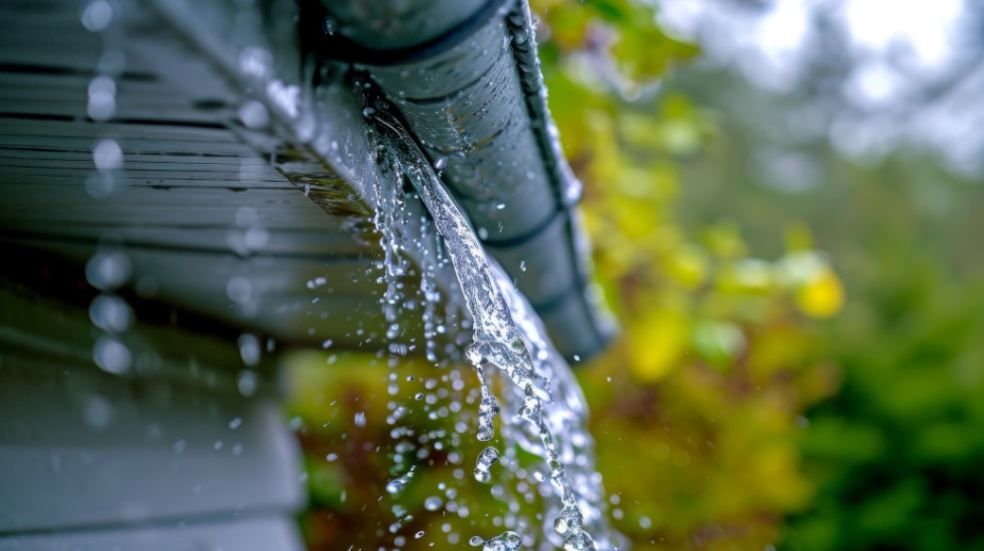
How To Install Stormwater Drainage To Prevent Flooding And Water Damage
Have you ever stepped outside after a downpour to find your lawn looking more like a lake? It's not just a soggy inconvenience; poor stormwater drainage can lead to a flooded basement, ruin your landscaping, and even damage your home's foundation. This all-too-common problem plagues many homeowners, but there's a solution that doesn't involve waiting around for a pricey landscaping crew.
By rolling up your sleeves and installing a stormwater drainage system yourself, you're not just saving money but you're protecting your home, boosting its value, and taking control of your property's well-being.
This guide is your step-by-step ticket to a drier, healthier home, breaking down the process into easy-to-follow instructions. Read on.
Understanding Stormwater Drainage Systems
Alright, so how do these drainage systems actually work? Think of it like a network of pipes and channels designed to whisk away rainwater like an unwanted guest.
There are two main types of drainage systems:
Surface drainage
This is your front-line defense against visible water. Think of ditches, gutters, and slopes strategically designed to guide water away from your house and into the street or a designated drainage area. It's like creating tiny rivers on your property to steer the flow.
Subsurface drainage
These are underground pipes with holes that collect excess water from the soil and channel it away.
These systems often work together, with surface drainage funneling water into subsurface pipes for efficient removal. They can include components like catch basins (those grated openings you see in the ground), channels, and pipes of varying sizes, all working in harmony to prevent your yard from turning into a swamp.
Now, DIY isn't for everyone. If you're looking for a hands-off approach, consider reaching out to experts like Better Flow Plumbing stormwater who specialise in designing and installing these systems. They'll assess your specific needs, local regulations, and create a custom solution to keep your property high and dry.
Planning Your Stormwater Drainage System
Planning your stormwater drainage system is like mapping out a road trip – you need to know where you're starting, where you're going, and the best route to get there.
Step 1: Assess your property
Where does water naturally pool after a rain? Are there slopes that could direct water towards your house? Knowing the lay of the land is crucial before you start digging.
Step 2: Create a drainage plan
Sketch out your property and mark the areas where water tends to collect. Then, plot out the paths you want the water to follow – away from your house and towards a safe drainage point like the street, a dry well, or a rain garden.
Step 3: Check local regulations
Before you break ground, it's important to check with your local municipality or homeowner's association. There might be rules about where you can discharge water, what size pipes you can use, or even permits you need to obtain.
A well-thought-out plan will save you time, money, and frustration in the long run, so don't skip this vital step.
Materials and Tools Needed
Alright, time to gather your supplies. Consider this your stormwater drainage shopping list, with a few extra items you might already have lying around in the garage:
Materials
- Pipes: You'll need pipes to create the channels for water to flow through. PVC pipes are a common choice because they're durable, affordable, and easy to work with. The size of the pipes you need will depend on the amount of water you expect to handle, so it's best to consult with a professional or refer to local guidelines.
- Fittings: These are the connectors, elbows, and tees that allow you to join pipes together and create turns in your drainage system.
- Gravel: Gravel is essential for creating a stable base for your pipes and promoting proper drainage. It also helps prevent soil from clogging the system.
- Landscape fabric: This porous fabric is placed over the gravel to prevent soil and debris from entering the pipes while still allowing water to flow through.
- Catch basins and grates: These are strategically placed openings that collect water from the surface and direct it into the underground pipes. Grates cover the basins to prevent debris from entering.
- Pop-up emitters (optional): These handy devices are installed at the end of your drainage pipes to disperse water evenly and prevent erosion.
Tools
- Shovel and pickaxe: You'll need these for digging trenches and breaking up any tough soil.
- Wheelbarrow: Essential for hauling dirt, gravel, and other materials around your work area.
- Level: This will help you ensure that your pipes are installed at the correct slope for proper drainage.
- Saw: You'll need a saw to cut PVC pipes to the desired length.
- Measuring tape: This will help you accurately measure distances and pipe lengths.
- Safety gear: Don't forget gloves, safety glasses, and sturdy footwear to protect yourself during the installation process.
Many of these items can be found at your local home improvement store. If you're unsure about what to buy, ask a store associate or consult with a professional for guidance.
Step-by-Step Installation Guide
Here's your step-by-step guide, designed to make the process as smooth as possible:
Step 1: Map it out
Use your trusty drainage plan to mark out where your trenches will go.
Step 2: Get digging
Follow your markings and start digging those trenches. Remember, they need to be wide and deep enough to fit your pipes and gravel base comfortably.
Step 3: Build a solid foundation
Add a layer of gravel to the bottom of each trench – this will give your pipes a stable base and ensure good drainage. Aim for a layer about 2-4 inches deep.
Step 4: Connect the pipes
Lay your PVC pipes in the trenches, connecting them with the right fittings as you go.
Step 5: Wrap it up (the pipes, that is)
Cover your pipes with another layer of gravel, then add a layer of landscape fabric on top.
Step 6: Fill it in
Backfill the rest of the trench with soil, packing it down firmly as you go.
Step 7: Catch basins and grates
Place your catch basins and grates where you marked them, connecting them to the underground pipes.
Step 8: Direct the downspouts
Connect your downspouts to your drainage system using extension pipes or splash blocks.
There you have it! Your very own stormwater drainage system, ready to tackle the elements.
Final Thoughts
Armed with a solid plan, the right tools, and a can-do attitude, you're well on your way to conquering stormwater drainage and boosting your property value. So, what are you waiting for? It's time to take charge and transform your yard into the envy of the neighborhood—a dry, functional, and valuable haven.











